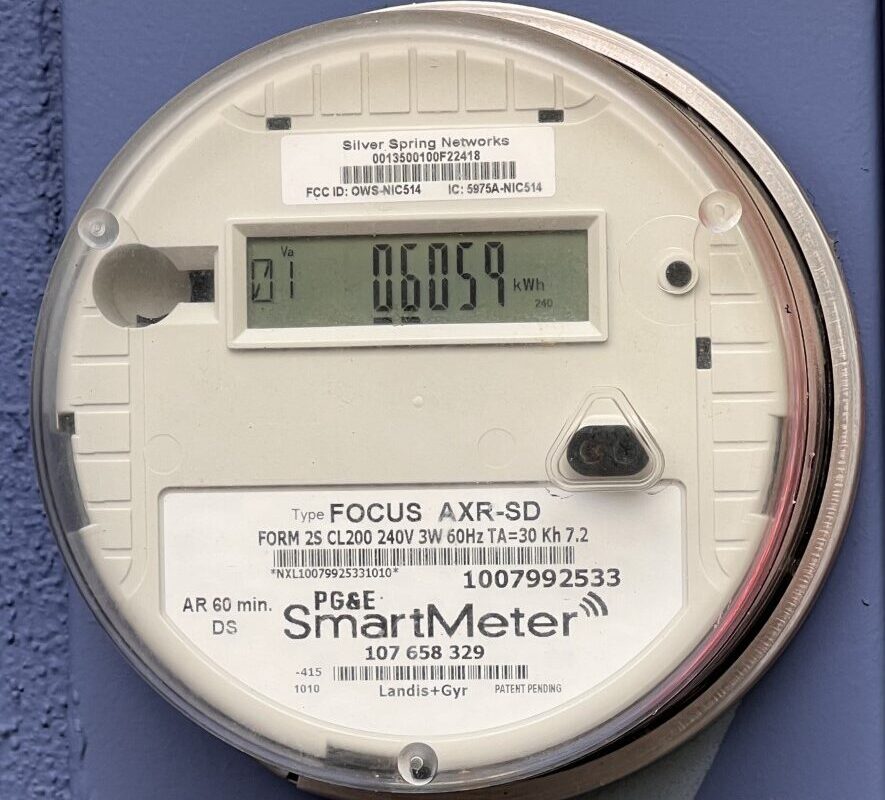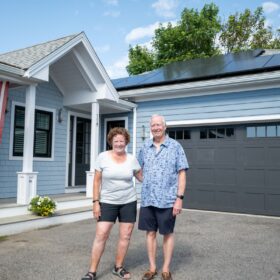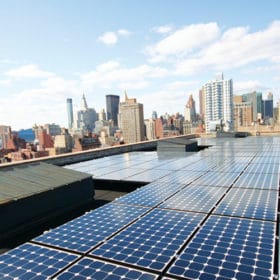By John Williamson, CEO and founder, KiloNewton
Let’s consider the lowest possible cost utility solar system. Bear with me here: the average ground mount solar system weighs about 250,000 pounds per megawatt DC. While that sounds like a lot, that’s primarily panels, which are typically comprised of silicon, glass and aluminum, and steel for the structure. There’s also PVF and other plastics, copper and aluminum wire. If we break this down by weight, about 45% of the weight is in silicon and glass, 45% is steel, approximately 5% aluminum and 1% copper, and the rest is made up of the other miscellaneous components.
Now if you consider commodity pricing of these components, the 1 MW system would cost you $160,000 in silicon and glass, $60,000 in steel, $15,000 in aluminum, and $8,000 in copper. Add this all up, plus some miscellaneous components and you’ve got roughly a $0.27/W system. There is arguably some room for silicon costs to continue to decrease, but the other components have lately been on the rise. You’re also going to need land and fuel for the materials to be manufactured and transported to the site. This might add around $0.08/W in the U.S. Now you’re up to $0.35/W.
In 2017, according the the Berkeley Utility-Scale Solar report put out earlier this year, the lowest reported cost project was approximately $0.60/Wdc, while the average utility-scale site was around $1.30/Wdc. Trackers are showing lower costs than fixed-rack products due to wind-mitigation strategies and improved inverter efficiencies, and modules are being produced more light-weight than ever. Solar costs are expected to remain level or continue to decline, even with the addition of tariff costs in the coming year.
The new SunShot 2030 initiative set by by the U.S. Department of Energy’s Solar Energy Technologies Office (SETO) has a goal to reduce the levelized cost of electricity (LCOE) for utility-scale solar in the U.S. by 0.03 per kilowatt-hour (kWh), or roughly 50%, by the year 2030, which takes into account the expected ramp-down of federal solar tax incentives. If we as an industry are going to accomplish that goal, how is it possible if the commodity prices are at $0.35/W today? Even if you made all the above commodities free, we are still only reducing capital expenditures by an average of 27%.
The final answer will certainly rely on new innovations in product efficiencies, such as new bi-facial module technology, components, and software to optimize installed system production; however, there is a limit on this as well – it’s not reasonable to assume we can improve module efficiency by 100% in 10 years.
So how will we get there?
By reducing so called “soft costs.” This term means something different to each sector of the PV community, yet applies to every single entity involved in the lifetime of a PV plant. Soft costs are not just the planned costs for construction, design, permitting, O&M, and development overhead. They also include the insidious unexpected costs that creep into every project due to overlooking a critical detail during site planning, the cost of lost energy due to poor design or technology selection, and the inefficiency of processes used to construct the plant.
This is a war on installed cost that must be waged on every level, through every organization. Shorten development and construction processes and simultaneously make them better, more accurate, and holistically optimize solar installations.
Skilled developers and contractors have certainly been working on this problem from various angles over the years and have used various strategies to mitigate these costs. One idea that appears appealing on its face is vertical integration. Theoretically, if you can control all the costs of development, design, components, installation, and asset management, you eliminate all the middlemen that add overhead costs, streamline your project’s lifespan through your organization, and create the lowest LCOE product.
This model can be effective for a well-controlled, predictable process. With different regional challenges around the world – including government requirements, code requirements, types of projects/land/buildings, financial incentives, technology preference, and so on – the vertical model only works well in very specific situations.
The path forward is through intense optimization of small components of the processes and soft costs required to build sites. Through software and process development, boutique design and construction companies, and more options in technology selection, there are countless opportunities to increase production or decrease project costs by 0.1-0.2%, depending on your market segment.
Developers can streamline their prospecting techniques to choose sites more efficiently, construction companies can improve site efficiencies through correction and avoidance of unnecessary complexities, and site operators can continue to optimize performance through intelligent feedback and maintenance plans.
Sites are growing more complex as utility solar is moving to areas where it is newly viable in areas with difficult terrain, vegetation and shading issues. Sites will need to mix technologies such as inverter and racking designs in order to maximize LCOE.
These new problems need new tools to solve in a simple manner. These examples, and more, all must be realized in the coming decades in order to collectively hit our targets and disrupt fossil fuels for good. These seem like small numbers individually, but collectively, these can add up to incredible results. Together, we can make the goal of reducing solar costs by 50% happen!
The views and opinions expressed in this article are the author’s own, and do not necessarily reflect those held by pv magazine.
This content is protected by copyright and may not be reused. If you want to cooperate with us and would like to reuse some of our content, please contact: editors@pv-magazine.com.








This same article is even more true with residential. Soft costs are through the roof
on the other hand….(notwithstanding costs of errors, omissions and contingencies), lying within the soft costs is the financial upside for the various contributing constituencies from investors to developers to EPC’s etc… which comprise the economic engine required to power the entire endeavor.
I think that several improvements are inevitable that easily drop the cost per kwh by half:
a) Bifacial costs 10% more but doubles the surface area (2 sides). Using 60 half-cut cells with pass-through sunlight and under-module solar reflectors can create an 80% improvement.
b) Silicon costs Daqo (DQ) about $8 per kg. So, for a 400W Bifacial panel, this is 2 cents per W or about 1/20 of one cent per kwh over 30 years of production.
c) Steel can replace aluminum, and plastics and wood can replace steel, cutting costs.
d) Solar thermal and solar PV can dramatically reduce the cost of production as can automation.
e) A doubling of production capacity can cut costs 20-30%.
40 cents per W at utility scale is probably doable today if the buyer provides the land and gets the permit. Modules cost 22-27 cents per watt according to pvinsights.com without tariffs. Huawei inverters are 5 cents per watt.
Totally missed here is the massive decrease in “installation” cost that assembly automation will bring. The DOE is already helping get this technology to market, such as PV Robotics(tm) from our company (SBIR Grant). We are planning on dropping large scale PV installation cost way more than 50%, along with significantly lower engineering costs with standardized layouts as others are also pursuing! Stay tuned. With PV already reaching (reached?) cost par with all other electric generation, these advances will accelerate PV installation beyond anyone’s imagination.
Wonderful information!
Thanks for the enlightenment.